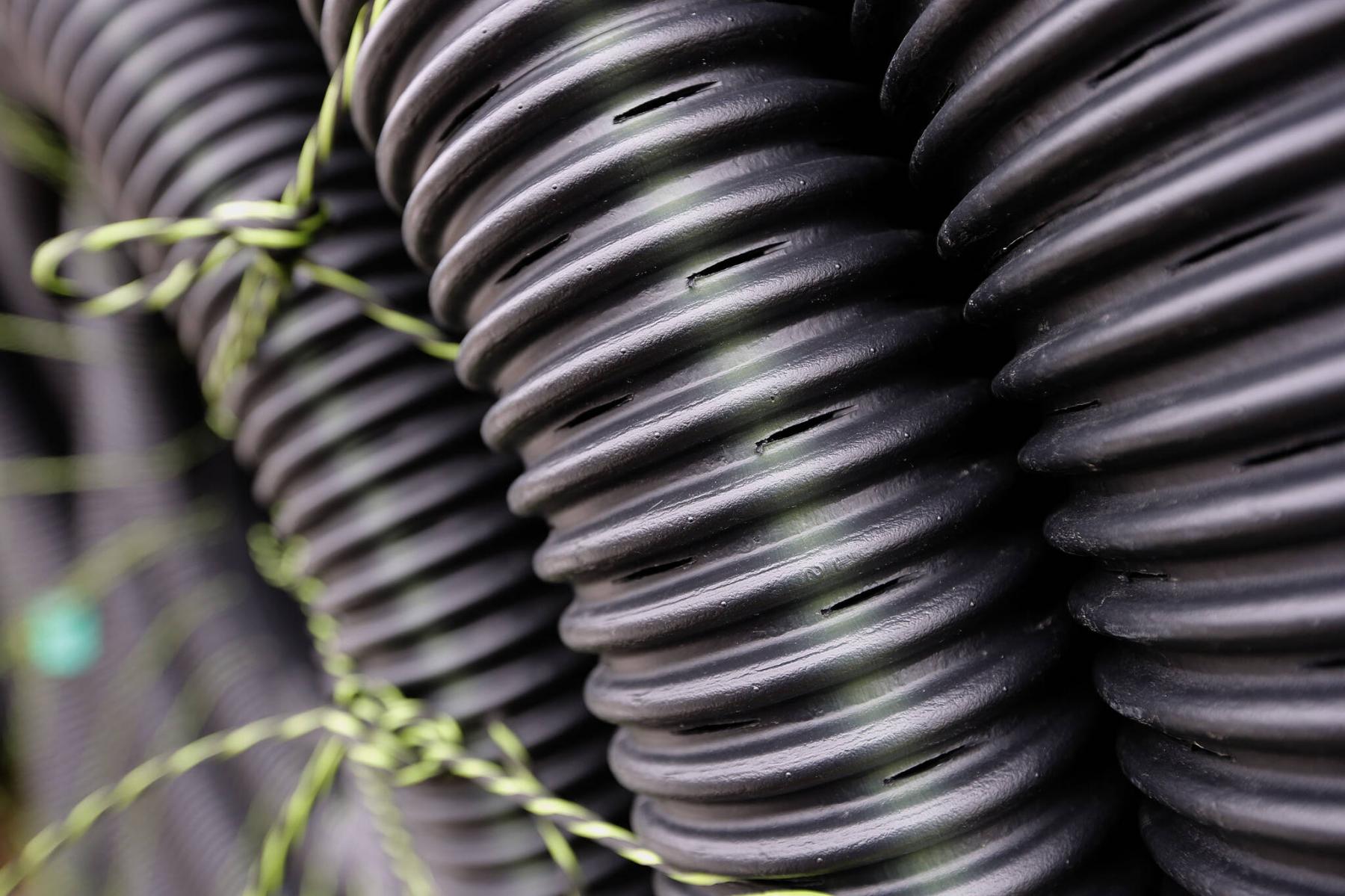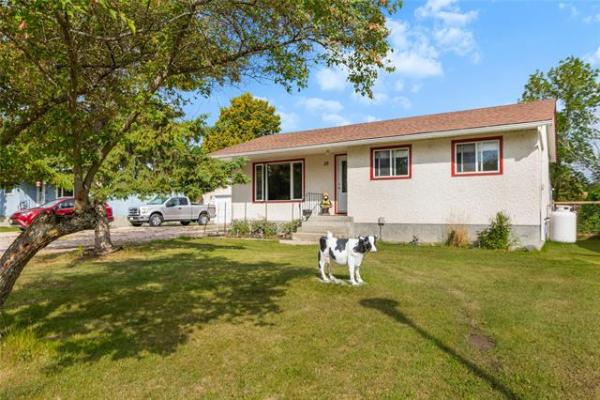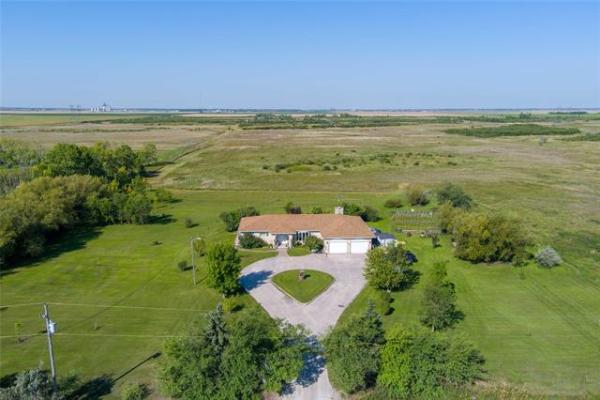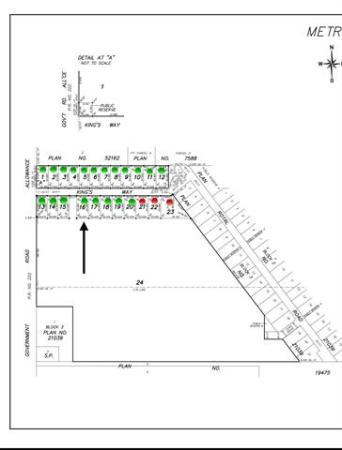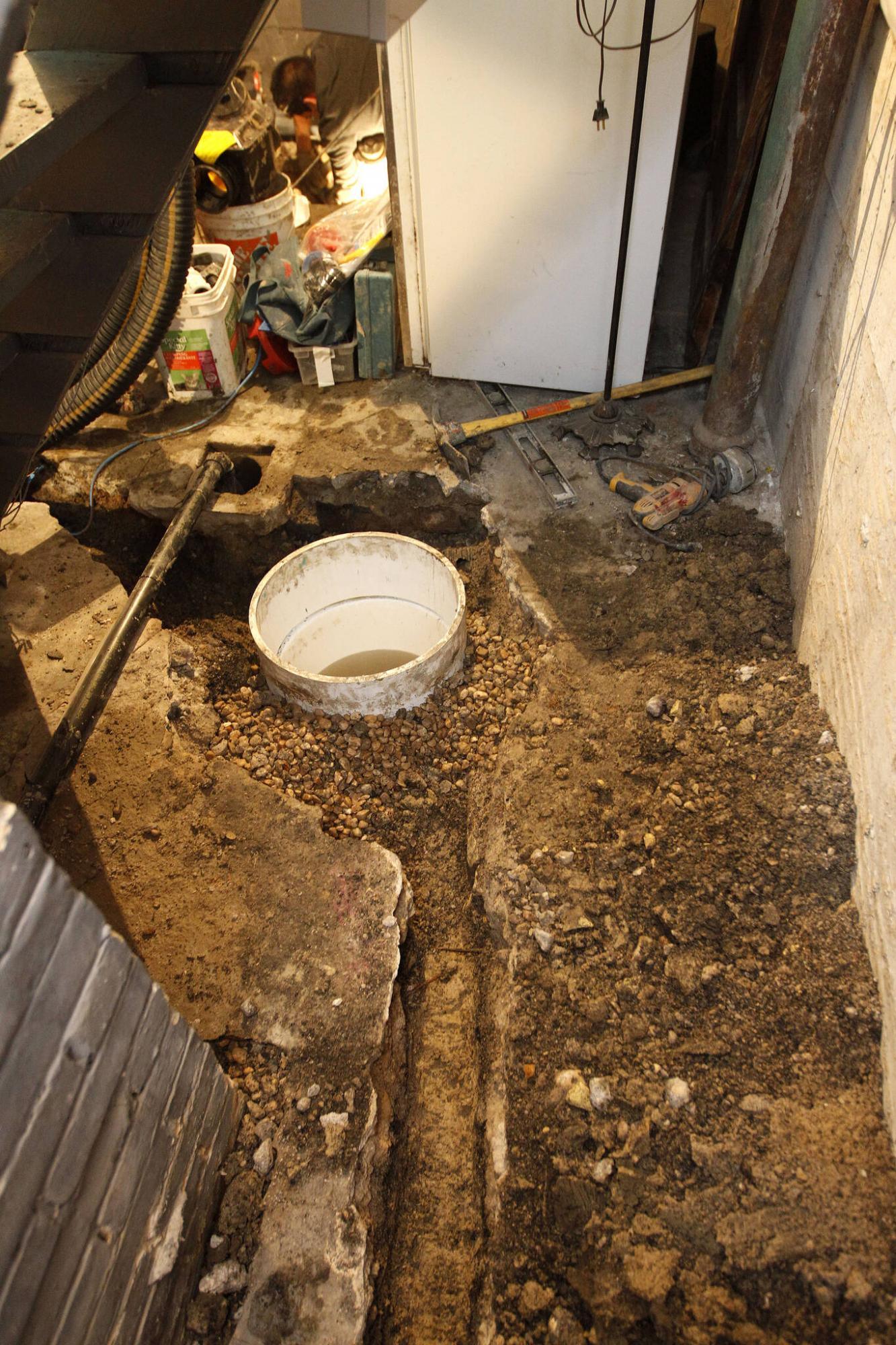
TREVOR HAGAN / WINNIPEG FREE PRESS FILES
Crawlspace odours could be related to issues with sump pits or pumps (pictured), weeping tile drainage or other excess moisture.
Question: A radon mitigation device was installed in 2017 in my Charleswood home. I have a structural wooden floor in the basement, with a crawlspace below. An odour intermittently emanates from the radon mitigation outlet, not so much in the winter but in the other months. I do not have a smell inside the house. There appears to be mould on the inside of the basement foundation wall, beneath the radon pipe outlet, but I do not know if that is causing the smell. The plumbing was checked underneath the basement floor and there appears to be no problem. What is causing the odour and what should be done about it? — Vaughan Bloomer
Answer: Radon mitigation systems are designed to remove excessive radon gas, but may also remove other airborne contaminants at the same time. Unless the resulting smell is occurring inside the living space, there is nothing to be concerned about and no action is required. However, the smelly air may be a sign of a wet crawlspace, which should be inspected and the appropriate repairs made to dry it out.
In a home found to have a high level of radon after long-term testing, according to Health Canada guidelines, remedial action may be recommended. In most cases this will include installation of a radon remediation system. Most of these include a series of plastic pipes, connected to a low-pressure exhaust fan. The intake pipe for this blower is normally installed underneath the concrete basement floor slab, or in the crawlspace. When the fan is turned on it will draw air out of the cavity it is enclosed within, and the soil beneath. If there is radon gas in this airspace, it will also be collected by the device at the same time.
The exhaust side of the radon fan will be connected to another series of sealed pipes, which normally exit directly through the foundation wall. In this way, any odourless, colourless, radon gas will be expelled to the exterior of the building. In that location, it will quickly become extremely diluted in the large volume of outside air and rendered harmless. Because the radon mitigation fan may run almost continuously, it will operate at a very low speed. This prevents any significant depressurization of the lower level of the home, which would likely occur with a higher velocity device. Dropping the air pressure in the basement could cause serious infiltration of air through the building enclosure, leading to a host of other issues.
Because the radon remediation system draws air from a cavity primarily containing soil, it may also pick up other particulates present in that air. This could include sewer gas, mould spores, dust, dirt, moisture, bacteria or other products of normal soil decomposition. Some of these items, especially if the crawlspace is wet, will have an odour associated with them. Because the air is being exhausted directly outside, there should be no serious consequences or health concerns attached to the smells. In fact, the expulsion of this humid air outside should help dry a damp crawlspace, and prevent excessive mould growth in that area.
My only concern with the stinky discharge at the termination of the radon piping is that it may be a sign of excessive moisture intrusion into the crawlspace. This may alert you to several components that require repair or maintenance. The first item to inspect should be the weeping tile and sump system. Open the lid on the sump pit and shine a flashlight to see the water level in the bottom of the sump. If the water is excessively high, and/or stagnant and dirty, the pump may need adjustment or replacement. Test the pump by lifting or overriding the float switch, or by engaging the pressure switch to see if it is working properly. Look for any leaks in the pit or the solid discharge pipe to the exterior. If anything is leaking or the pump is not working properly, immediately call a plumber to repair or replace any defective components. Since you have already hired a plumber to verify there are no problems with the drains and water supply piping in this area, you can skip that step.
Next, visually check the soil around the sump and the weeping tiles leading to it. If the soil is visibly wet, there may be a problem with leakage, movement or improper installation. Especially if there are wet areas directly around the buried or partially visible plastic drainage pipes, then something is awry. This may be due to soil movement, which may eliminate proper slope of these pipes to the sump, or improper materials. If perforated weeping tile was installed inside the crawlspace, rather than solid pipes, wet soil will be almost a certainty.
Finally, check around the perimeter of the crawlspace to see if the soil is wet or if there is any evidence of ponding water. Because there should be a significant slope from this area to the sump, the perimeter soil should be quite dry. If this is not the case, there may be eavestrough or grading issues on the outside of the foundation, or another defect in the weeping tile system. While crawling around in this area, visually check the floor joists and sheathing for signs of rot or mould. If seen, probing with a screwdriver or scratch awl is the next step, to see if there is any serious moisture damage in the wooden floor structure. Presence of any of these issues is a sure sign of a wet crawlspace, and immediate action should be taken to prevent further mould growth, rot and moisture damage.
Excessive odours coming from your radon remediation system discharge pipes at the exterior of your foundation should be harmless, but may be a sign of a moisture issue in the crawlspace. Inspecting that area for excessive moisture, and fixing anything related to a defect in the weeping tile and sump system, or poor grading outside the foundation, should be the focus of any odour reduction efforts.
Ari Marantz is the owner of Trained Eye Home Inspection Ltd. and a Registered Home Inspector (RHI)(cahpi.ca). Questions can be emailed to the address below. Ari can be reached at 204-291-5358 or check out his website at trainedeye.ca.
trainedeye@iname.com

